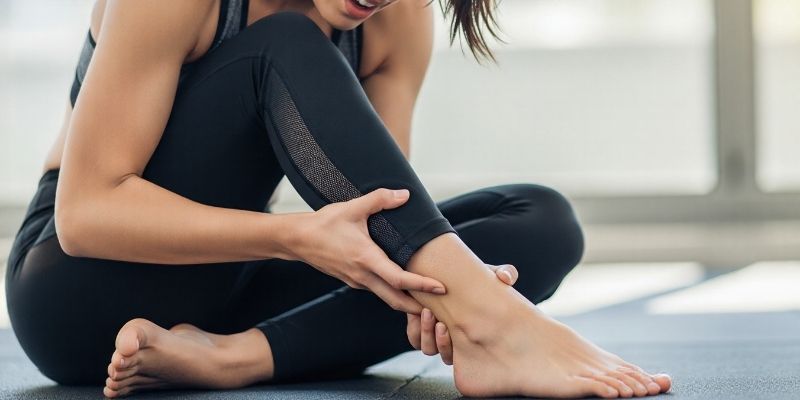Managing Tendinopathy: What You Need to Know

Tendinopathy is a common condition that affects people of all ages and activity levels, from weekend joggers to elite athletes. If you’ve been told you have “tendinitis” or “tendinosis,” you’re not alone—these older terms have been around for years. But today, “tendinopathy” is the correct, up-to-date term. It reflects the current understanding of tendon pain and avoids unhelpful language like “degeneration,” which can create unnecessary fear.
At Lake Health Group, we aim to empower clients with the right information to recover effectively and confidently.
What Is Tendinopathy?
Tendinopathy is a condition where a tendon becomes painful, usually due to changes in load or stress over time. It’s not caused by inflammation (despite the old name “tendinitis”), and it doesn’t mean your tendon is damaged beyond repair.
Key Features of Tendinopathy:
- Pain is usually localized to a specific area on the tendon.
- Pain is often worse during or after activity that loads the tendon.
- There is usually tenderness when pressing on the tendon itself.
If a sore area isn’t tender to touch, it’s unlikely to be a tendon issue.
Do You Need Imaging?
In most cases, imaging isn’t required to diagnose tendinopathy. A skilled health professional can usually diagnose it based on your history and physical exam. However, imaging may be helpful if the diagnosis isn’t clear or if there may be other causes of your pain.
Interestingly, things like “morning stiffness” or changes seen on scans are not reliable indicators of tendinopathy.
What Else Can Influence Tendon Pain?
Tendon pain doesn’t always happen in isolation. Other contributing factors can include:
- Pain sensitivity or a sensitized nervous system
- Hormonal changes (e.g. menopause)
- Autoimmune or systemic issues, including diabetes or thyroid disorders
- Genetics and family history
- Mental and emotional stress
- Fear of movement or reduced physical confidence
Understanding and managing these broader factors is an important part of your recovery.
What Not to Do
To support healing and recovery, here are a few things to avoid:
- Poking or pressing on the tendon regularly – this can increase sensitivity
- Stretching the tendon – it might feel good short-term, but can aggravate symptoms
- Passive treatments only – like massage, ultrasound, or taping. These may provide short-term relief but won’t address the root problem
What To Do – The Research-Backed Approach
The gold standard for treating tendinopathy is a progressive strength and loading program. This involves gradually increasing the load placed on the tendon so it can adapt and become more resilient over time.
It’s normal to feel some discomfort during rehab, if the pain is manageable and not severe. A sore tendon can still be loaded as pain does not equal damage.
Phases of Tendinopathy Rehab
Your physiotherapist will typically guide you through several stages:
- Load Capacity and Tendon Stiffness
At this stage, the goal is to build the tendon’s ability to tolerate load.
- Isometric exercises: Static holds (e.g., holding a heavy weight without movement) to reduce pain and build strength.
- Isotonics: Controlled, repetitive movement with resistance (e.g., slow calf raises or knee extensions).
- Technique coaching: Ensuring movement patterns are efficient and safe.
💡 Daily isometrics can be useful for pain relief.
Isometric vs. Isotonic vs. Plyometric:
- Isometric: Muscle contracts without movement (e.g., wall sit).
- Isotonic: Muscle contracts with movement (e.g., bicep curl).
- Plyometric: Quick, powerful movements that use stretch and recoil (e.g., jumping, hopping).
- Force Generation and Absorption
This phase focuses on generating and absorbing more dynamic forces.
- Concentric strength work: Like jumping up onto a box (force generation).
- Landing mechanics: Learning to land softly and safely (force absorption).
- Deceleration drills: Practicing stopping and changing direction.
- Stretch-Shorten Cycle and Return to Sport
This final phase is about tendon elasticity and sport-specific skills.
- Plyometrics: Rebounding, skipping, and bounding
- Sport-specific tasks: Cutting, sprinting, agility drills
- Running reintroduction: Carefully graded based on your goals
This stage ensures your tendon can handle real-life or sport demands.
Other Therapies: What’s Worth It?
- Cortisone injections: Never inject into the tendon itself—this can cause serious harm. In some cases, it may be used in the tendon sheath, under guidance.
- Shockwave therapy: Can be useful for some types of tendinopathy.
- Collagen supplements: May help when combined with a loading program.
- PRP or blood injections: Not much evidence to support their use.
Final Thoughts
Tendinopathy recovery isn’t always quick, but it is achievable with the right plan. The key is to gradually rebuild tendon strength and resilience, address whole-person factors like stress and general health, and stay active without fear.
If you’re dealing with tendon pain, our team is here to guide you through every phase—from initial diagnosis to recovery and return to what you love doing most.
Michael Pierce
Sports Physiotherapist
Lake Health Group
